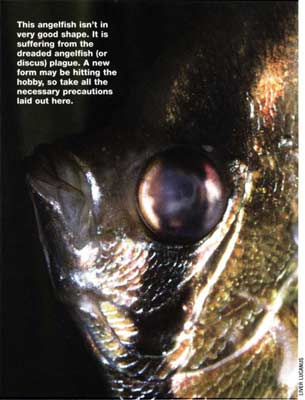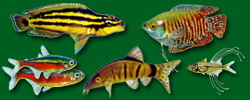- О проекте
- Фотогалерея
- Аквариумные беспозвоночные
- Аквариумные растения
- Аквариумные рыбы
- Альбомы посетителей сайта
- Рептилии и амфибии
- Выставки, встречи, конкурсы
- Магазины, разводни, домашние хозяйства
- Клуб аквариумистов "Хемихромис", г. Петрозаводск
- хозяйство Владимира Челнокова
- Аквариумы Кузьмичева Кирилла
- Дискусоразводня “С.К.А.Т.” С.И.Горюшкина
- Зоомагазин «Бетховен» г.Армавир
- аквариум Лики Аверкиевой
- аквариум Юли из Жаворонок
- аквариум Яны И.
- дома у Михаила Волкова
- зоомагазин Зеленая игуана
- карантинная база Андрея Чурилова
- коллекция Евгения Цигельницкого
- коллекция Константина Шидловского
- разводня Александра Березина
- разводня Владимира Сторожева
- рыборазводня АкваЭкзотика из Лыткарино
- хозяйство Алексея Бринева
- Разные комбинации ламп Hagen
- Сингапурский каталог растений
- надо разбирать
- Библиотека
- Форум
- Правила сайта
- Поиск
Beware the Discus Plague
Статья про дискусовую "чумку". На английском языке.
Beware the Discus Plague | ||
A new type of this pathogen may have emerged in the hobby. | ||
|
It was the fall of 1986 when importers and fish stores began reporting that the angelfish (Pterophyllum spp.) and discus arriving from Asia were starting to succumb to a strange and highly contagious malady. The fish arrived in good condition but quickly sickened. The disease infected these two cichlids and thus was termed "angelfish" or "discus plague" depending on the species being discussed. Uaru can also be infect¬ed, but because these fish are uncommon in the aquarium trade, virtually no one makes reference to the disease as Uaru plague.
Strangely, in a tank full of fish only the dis¬cus, angelfish or Uaru may succumb. The other fish will behave normally and will display none of the signs of the disease. Untergasser (Discus Health, 1991) notes that because this plague is so deadly that losses were extensive when the condition first appeared. The same can be said now, although most breeders have learned to contain an outbreak.
In His Own Words
Untergasser (Discus Health, 1991) describes the epidemic process:
"Two or three days after the start of the infection the discus appear to be unwell and usually their coloration turns dark. A close examination may indicate a slight swelling of the mucous membrane.
"At that point the fish become apathetic and react less to external stimuli. The mucous mem¬branes swelling increases ... and along the sides of the body a characteristic reticulated structure of grayish white mucus" starts to appear. The skin area that can be touched and fanned by the pectoral fins usually remains unaffected.
"During the final stage the swollen mucous membrane flakes off in pieces. In concurrence with the excessive mucus production, a rapid deterioration of the water quality can be noticed. The loose skin pieces start to decay and place a severe burden on the water. It becomes cloudy and starts to smell. The vast number of decay bacteria and pathogens in the water place the fish under additional stress. The resist¬ance of the fish to disease is diminished, and all pathogens on and in the fish ... multiply uninhibited."
| Further Description |
The above is a good but not a complete description of the disease process. In my experience, the first sign of the plague is that the fins turn opaque and sandy. Within 24 hours the fish darken, the fins will fold and the fish will begin to congregate in a corner, either near the water sur¬face or near the tank bottom. The fish will sidle closely, appearing as if stacked.
After another 24 hours the white body slime covering the body sides begins to peel away and fouls the tank. During the next 48 to 72 hours fish begin to die. In some cases, only a few fish will perish; in others mortality can be almost complete. If the fish survive, they will begin to clear up in a couple of days and then resume feeding; when the outbreak is ongoing the fish will not feed.
The discus plague appears to be highly contagious, is probably viral in origin and likely capable of becoming air¬borne. I have seen it spread in a hatchery where the tanks were covered and where no central filtration system was available. The pathogen caused widespread mortality.

Some 20 years after the first outbreak was reported, the causal factor is still unknown, but all leads suggest that the condition is viral and that fish can become reinfected. Subsequent outbreaks, if they occur, will not be as virulent, possibly because the fish begin acquir¬ing a certain level immunity. As an example, I intentionally infected a group of fish three times during a seven-month period. With each out¬break fewer fish showed signs of mor¬bidity and recovered quicker.
Treating the Infection
Various treatments have been promulgated, each with variable effi¬cacy. This may be due to there being different strains of the pathogen, each with varying levels of morbidity, or to the exposure history of the fish. My suggestion is to use a combination of treatments, including lowering the tank temperature, lowering the acidity of the water and using a homeopathic treatment. Antibiotics will have little impact on a virus and only weaken an already stressed fish.
On first detecting the pathogen, unplug the heater or lower the tem¬perature to about 75 to 79 degrees Fahrenheit. This will slow the spread of the pathogen; in a warm-water environment bacteria and virus growth and proliferation accelerates.
I then suggest adding Terminalia catappa (West Indian almond) extract to the tank. This can be purchased, or it can be made at home by boiling dried leaves and then adding the resulting brown liquid to the tank. Boil six to 10 leaves in 6 cups of water until the water has been reduced by half. Add 1 cup of the mixture to every 25 gallons of water.
My view is that the extract, by darkening the water slighdy, makes the fish feel more comfortable. A darkened tank is unquestionably less stressful than one that is brighdy lit. The extract also seems to have certain bacterial-inhibiting qualities, and this could deter opportunistic bacteria from further attacking the fish.
Also, reducing the pH makes it more difficult for viruses and bacteria to proliferate. Discus can withstand low pH levels. By slowly lowering the pH to 4 over many hours, an outbreak can be controlled.
At First Sight
When an impending outbreak is starting, do not feed the fish. Adding food, which will probably not be eaten, will only augment the pollution caused by the pealing layers of body mucus. The water can then become a bacterial soup.
Feeding should resume once the fish have recovered, several large water changes have taken place and the fish show increasing signs of being hungry. Untergasser recommends lowering the fish density, increasing aeration and filtration and subjecting the water to UV radiation. All of these measures are intended to reduce the organic load and bacteria density.
Should an outbreak occur, maintain extreme hygienic quality. Avoid any cross contamination and thoroughly disinfect buckets, hoses and all equip¬ment that came into contact with the infected fish. These are quite often the source of widespread infection.
Since about January 2008, a dis¬tinct form of the plague has been appearing in hobbyists' tanks. It seems to originate in South America and infects not only discus but also lori-cariids. The disease seems to have a longer cycle (lasting as long as two weeks), and in some shipments all the fish perish slowly.
Conventional treatments do not seem to work, though antibiotics in this case seem to offer the fish relief. Obviously, we need to learn more about this new pathogen, and as the information becomes available I will report it to readers.
»
- 7212 просмотров


